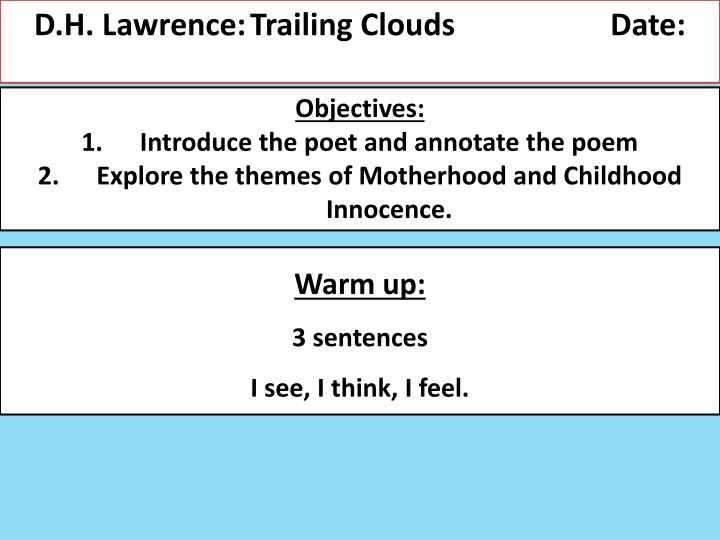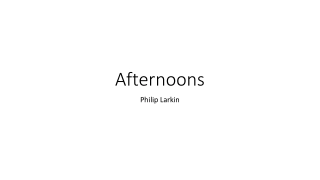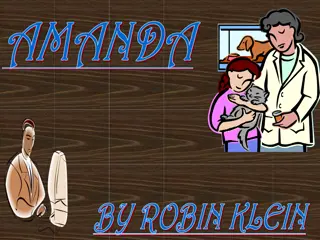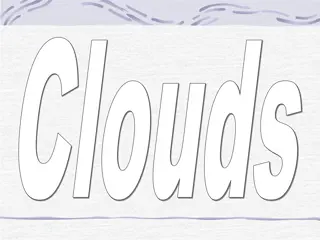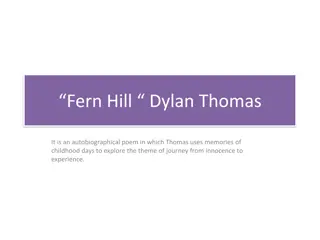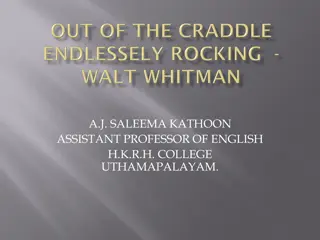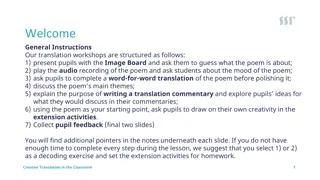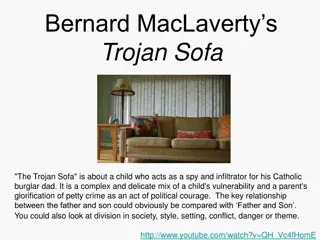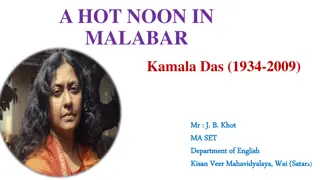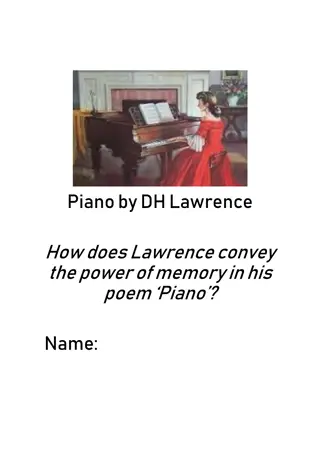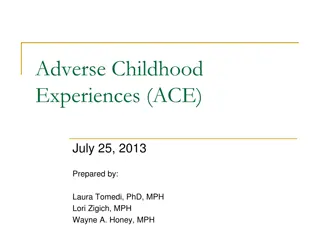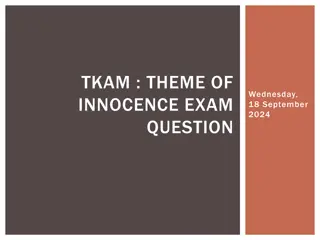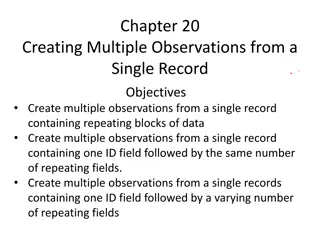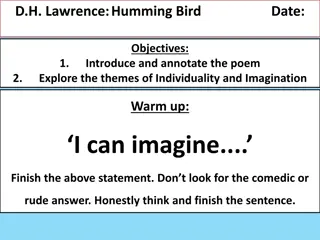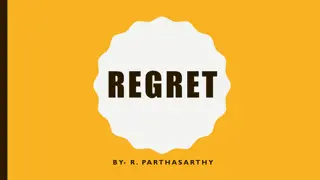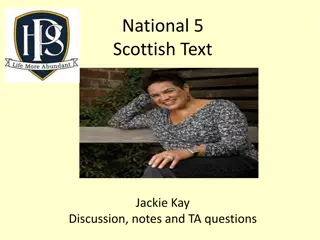Analysis of D.H. Lawrence's Poem "Trailing Clouds" and Themes of Motherhood and Childhood Innocence
Explore D.H. Lawrence's poem "Trailing Clouds" through an analysis of the poet's background, the context of the poem, and its themes of motherhood and childhood innocence. Delve into the striking imagery, rhythmic structure, and emotional depth of the poem as it portrays the intimate bond between a mother and her sleeping baby. Uncover the nuances of Lawrence's writing style and the profound reflections on nature and human experience embedded within this poetic piece.
Download Presentation

Please find below an Image/Link to download the presentation.
The content on the website is provided AS IS for your information and personal use only. It may not be sold, licensed, or shared on other websites without obtaining consent from the author.If you encounter any issues during the download, it is possible that the publisher has removed the file from their server.
You are allowed to download the files provided on this website for personal or commercial use, subject to the condition that they are used lawfully. All files are the property of their respective owners.
The content on the website is provided AS IS for your information and personal use only. It may not be sold, licensed, or shared on other websites without obtaining consent from the author.
E N D
Presentation Transcript
D.H. Lawrence: Trailing Clouds Date: Objectives: 1. Introduce the poet and annotate the poem Explore the themes of Motherhood and Childhood Innocence. 2. Warm up: 3 sentences I see, I think, I feel.
D.H. Lawrence: Trailing Clouds Date: Objectives: 1. Introduce the poet and annotate the poem Explore the themes of Motherhood and Childhood Innocence. 2. I see, I think, I feel
Context for D.H. Lawrence Note this Poor family in Nottingham mother wanted him to get an education and have more than they did. He became a teacher. German wife during WW1. Forced to leave country because 1) they were accused of being spies and 2) his books were banned for being too sexy. Wanted to reconnect with nature and get away from intellectual, dehumanised Western civilisation. 'Einai Kalytero Anthropo Apo Ton Patera Toy ?
Context for this poem - note This poem is also called A Baby Asleep After Pain . For his first job, he moved to London, lodging with a family. Mr and Mrs. Jones had a baby who he was fascinated by. He believed that we are closest to God as children and life moves us away from the divine. Why do you think they changed the title?
Baby-Movements II Trailing Clouds D.H. Lawrence As a drenched, drowned bee Hangs numb and heavy from a bending flower, So clings to me My baby, her brown hair brushed with wet tears And laid against her cheek; Her soft white legs hanging heavily over my arm, Swinging heavily to my lullaby. My sleeping baby hangs upon my life, As a silent bee at the end of a shower. Draws down the burdened flower, She who has always seemed so light Sways on my arm like sorrowful, storm-heavy boughs, Even her floating hair sinks like storm-bruised young leaves Reaching downwards; As the wings of a drenched, drowned bee Are a heaviness, and a weariness.
Notes Form A free-verse, natural poem with a distinct music. Clusters of long MONOSYLLABLE words slow down the poem while alliteration speeds it up. The stresses also fall on the first syllable of many words, creating a fallingeffect . This is an Imagist poem full of images
Notes line 1-7 The poem consists of three sentences. The first gives a simile, a comparison between a bee weighing down a flower and a baby clinging to the speaker. The baby is closely observed. You could argue this is the mother speaking, but all of Lawrence's other poems are personal. What do you think?
Notes Lines 8-10 The second sentence reworks the image. The baby is asleep and the speaker wonders if it is a burden. The speaker feels a responsibility for, and the weight of, the baby like the flower does the bee. What s the difference?
Notes Lines 11-16 The final section reworks the images again, but develops and elaborates it. The baby was light and now is heavy after a storm has passed. Two words that define the atmosphere from the last line heaviness and weariness .
Notes final note The baby is not her normal self. Laughterless . Heavy instead of light. Floatinghair now sinking downwards. Perhaps it is losing it divine innocence.
Questions: Remember quotes. 1. What is your opinion of the images in this poem? Choose two images in your answer. 2. How would you describe the mood of the speaker and this poem? 3. How would your reading of the poem change if you thought it was a man talking instead of a woman, or vice versa.
